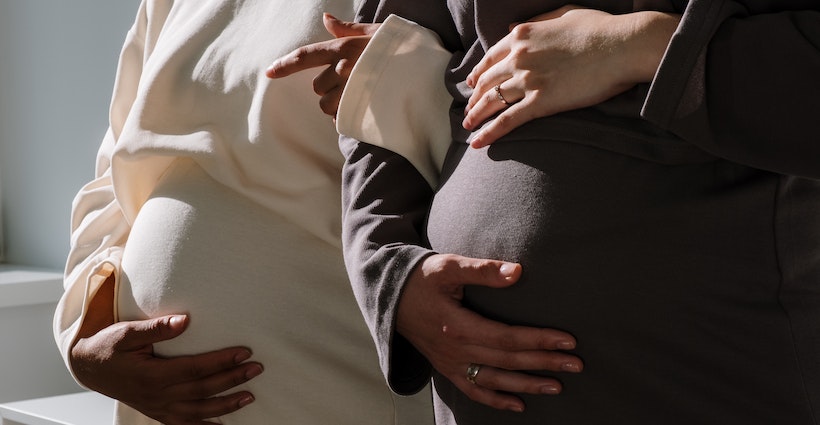20 Weeks Pregnant: Pregnancy Symptoms & Baby Development
Find out what to expect from every week of your pregnancy.
20 weeks pregnant is how many months?
Month 5 (Trimester 2)
Baby development at 20 week
Diet & nutrition

Exercise and health
At 20 weeks pregnant your baby will be roughly 16cm from head to bottom (the size of a banana), and will weigh around 300g. Their heartbeat is strong enough to be detected easily.
Your baby is now covered in a layer of white, creamy ‘vernix’, a substance that’s thought to protect their delicate skin. Later on, the slipperiness of vernix will help your baby make its way down the birth canal.
If you’re having a baby girl, her uterus will be developing1, and her ovaries will already have seven million primitive eggs in them. When she’s born, she’ll be carrying two million eggs. If you’re having a baby boy, then this is the week when the testes start lowering from his abdomen.
The development of your baby’s nerve cells is slowing, but more complex connections are forming – so much so that your baby can enjoy a satisfying stretch.
Your anomaly scan
Between weeks 18-20 of your pregnancy, you’ll be scheduled for an anomaly scan to ensure your baby is developing properly, and discuss next steps if there are any suspected issues. It’s no reason to worry.


Pregnancy symptoms at 20 weeks
Swollen or bleeding gums
Stretch marks
Frequent urination
Bloating and gas
Belly pains
Iron is a key nutrient throughout pregnancy, and an important part of a balanced diet. The recommended daily intake for every woman, whether pregnant or not, is 14.8mg each day. Your blood cells need iron to carry oxygen around your body and to your baby. Iron also contributes to your baby’s normal cognitive function
Iron deficiency can cause anaemia, so your iron levels, haemoglobin levels and red blood cell count will be regularly checked while you’re pregnant.
Many women have lower haemoglobin levels during pregnancy, but iron supplements are only prescribed if they’re very low.
Foods rich in iron
- Lean meat (always ensure it’s well cooked)
- Oily fish, such as sardines
- Dark green veg, including broccoli, watercress, spinach and kale
- Cashew nuts
- Pulses, chickpeas, beans and lentils
- Whole grains, including wholemeal bread, and iron-fortified breakfast cereals
- Dried fruits, such as apricots, prunes and raisins
- Eggs

THE SCIENCE BEHIND Iron
Powered by Nutricia
Vitamin C can help improve iron uptake – but some ingredients and compounds can inhibit your ability to absorb iron. For instance, tea and coffee contain phenolic compounds (natural chemicals that create flavour and ‘mouthfeel’) which are known to inhibit iron absorption.
Wholegrains were also thought to prevent mineral absorption due to phytates. However cooking, boiling, soaking or germinating whole grains makes phytic acid inactive, allowing you to absorb iron and other minerals, and benefit from wholegrain fibre
